“It is like an Ocean’s Eleven plan, where a curious member of the honey bee social team discovers a protected vault of liquid gold in the area. This brave forager girl ultimately enters an unfamiliar hive facility, perhaps passing by an occupied guard, or by just being persuasive, and inspects and pockets a small sample of the treasure held within. Upon escape, she returns home and spins the story to her sisters of the payoff. Interest builds as the waggle message is communicated and an event is being planned. Excitement fiercely moves the air as a war is about to ensue. Confrontation will prevail, lives will be lost and wax capped vaults will be torn open with quick nervous strength. When the job is done, little evidence, if any of who perpetrated this crime, will exist. Mission accomplished… for now.”
We all have heard, and many of us have witnessed, either robbing in action or performed a forensic inspection and determined that robbing occurred. It happens to the best beekeepers and is an action based on the environment. Sometimes, weak colonies subject to disease or pathogens succumb to this pilfering or it may be a colony that is small in numbers who cannot defend itself. Perhaps, it is us, as the beekeeper, during a long inspection that incites this behavior. Robbing can be stimulated when opportunity exists and if natural resources are slim. During the year, we usually witness a higher potential for robbing after surplus honey has been collected and dearth sets it. Great populations of bees exist in summer, and with an unemployment line forming, bees may be persuaded to change their foraging habit(s).
Robbing is nothing more than another form of foraging where the rewards are great. It is an act that can be devastating for a beekeeper as cared for and nurtured colonies fall quickly and are defeated. Hives are lost, diseases and varroa mites may be transferred, and the bee yard may carry an aggressive nature with defensive bees, easily provoked. As a beekeeper, we may question the morality of our girls, but perhaps it is a form of Darwinism, where either it is the survival of the fittest or the ability to adapt to change. Either way, robbing is something we must minimize to decrease summer mortality and promote hive health.
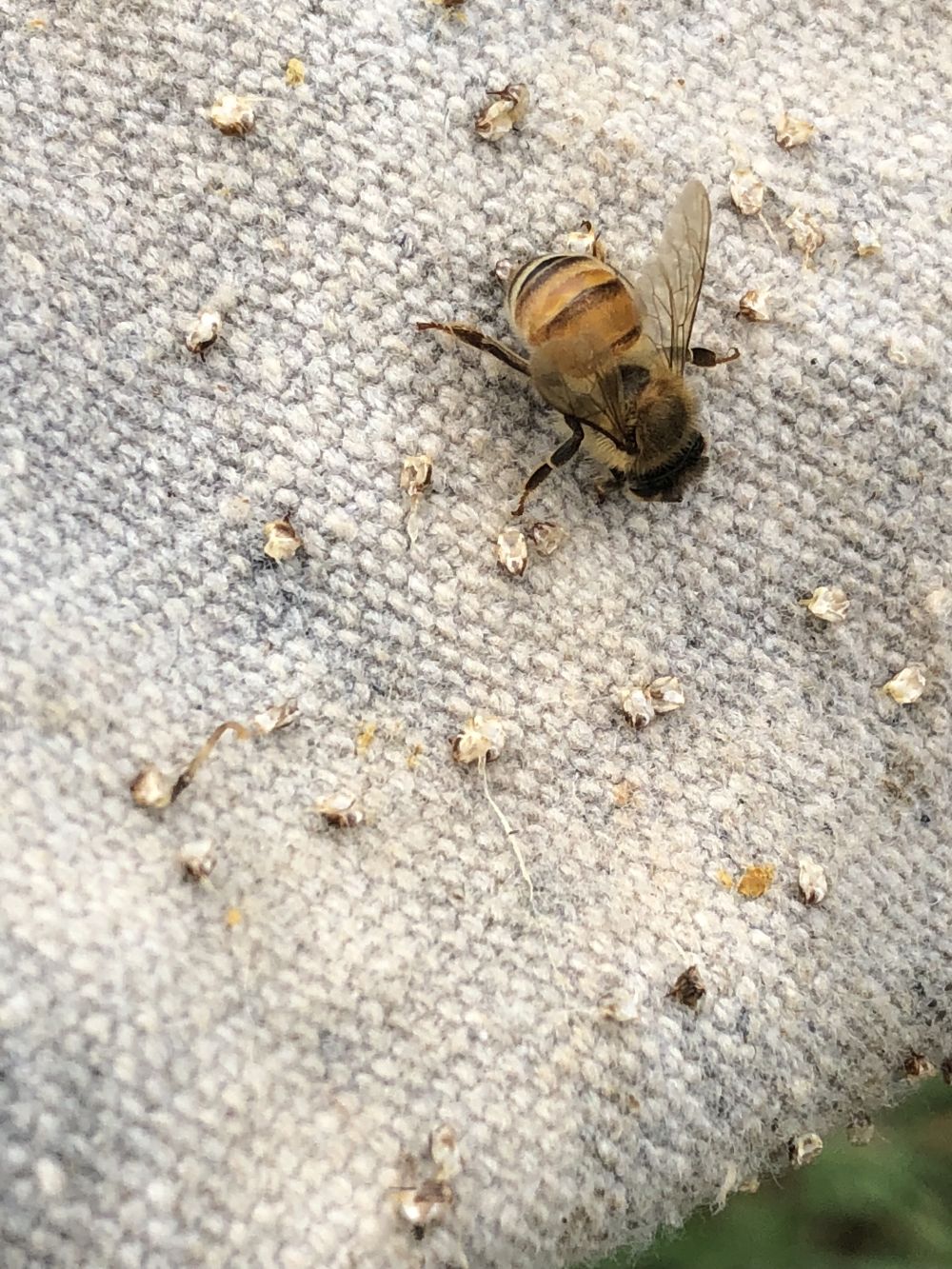
Once robbing has begun, the challenge to stop it can be a frustrating, sometimes devastating, adventure. Yard management is paramount in the summer post honey harvest as inequalities in hive robustness and size can lead to a robbing event. Having colonies in the same yard that are similar in size, stature, and population may reduce the propensity of robbing. The art of equalization and moving smaller colonies such as nucs is advised. Keep nucs for their protection exclusively in a different yard away from full-sized colonies. Yards with fewer colonies allow beekeepers to be more efficient and quicker in their actions hopefully reducing the onset of robbing.
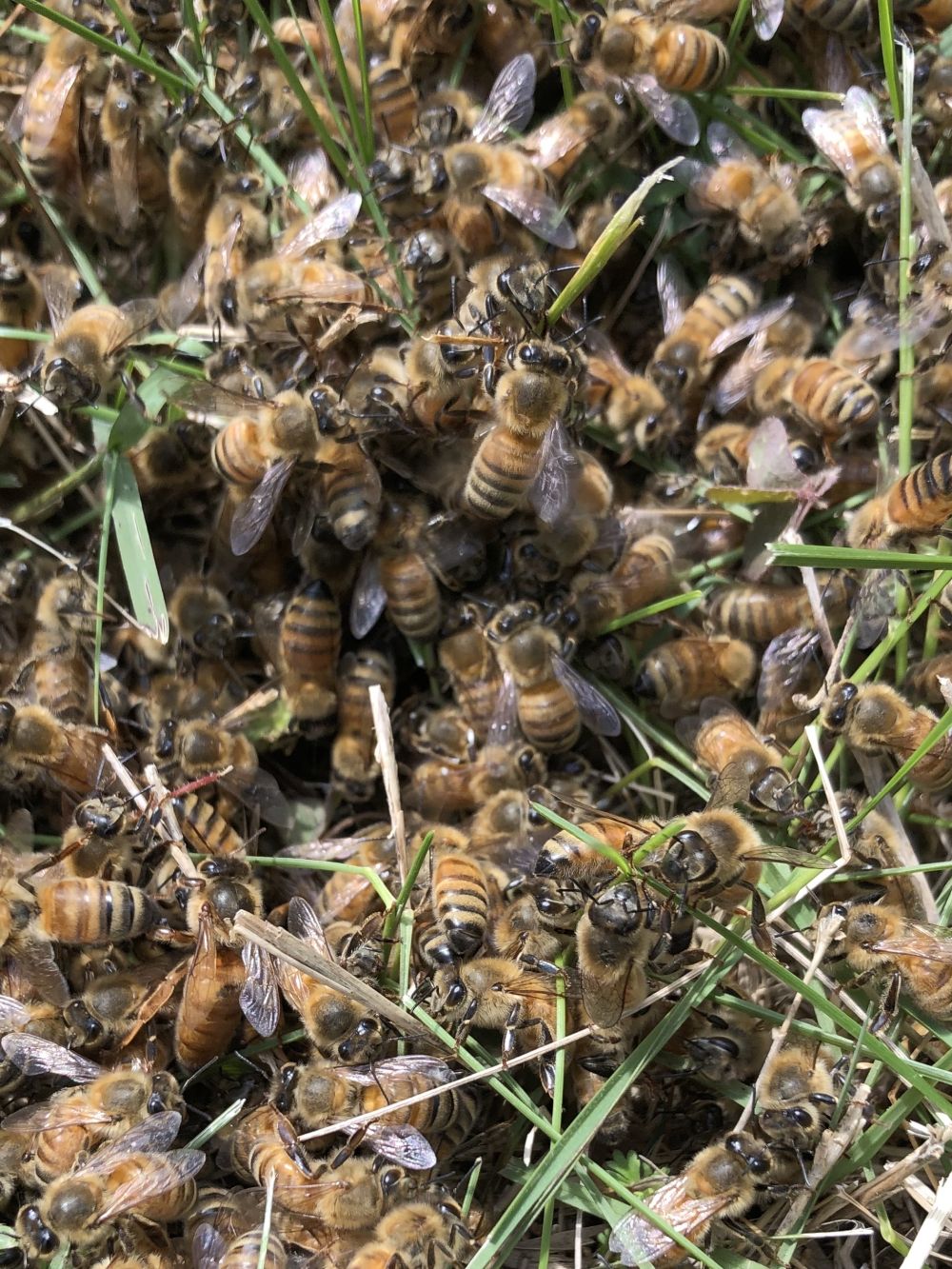
Reduce Entrances but give adequate ventilation. Some methods are:
Robbing Screens are a hardware device that alters the path bees usually take to enter the hive. The new entry point is located about half a foot (~15cm) above the former main entrance and is placed so that it is located on a solid surface that reduces the scents of the hive that are situated at the once, main entrance. Robbing screens are effective and should be placed on hives before the robbing season begins. They are commonly used as a beekeeper’s tool when robbing has already started and can reduce or delay robbing activity. It is common to see many bees flying in the air as hive residents are unfamiliar with the new entrance. Robbers are usually deterred, and many robbing screens have multiple entrance choices. Select a new entrance should robbing engage in the near future again.
I think am being robbed! Robbing is an interesting phenomenon in that our bees usually act differently than what we accustomed to. Sometimes large unexpected activity around a hive may be the result of drones returning from their daily late afternoon excursion from the local Drone Congregating Area (DCA), or the weather may be changing, and large numbers of foragers are returning home. In any event, observe at the colonies with veil and safety equipment. Examine the activity in the bee yard and identify the hive or hives of concern. A careful look at the actions in the front of the hive, especially on the ground is telling. Robbing bees may not direct themselves in a line straight for the entrance, instead, they may fly around looking for a breach or opportunity to enter the hive. If the robbing is just beginning, the bees have just begun the battle, if robbing has been prolonged, dead bees and scattered wax cappings will be present in front of the hive. Inspect the entrance of the bottom board for wax capping remnants. Remember, the hive that is being robbed is defending its family and resources which may cause aggressive bee behavior in the bee yard, not to mention the hive that is being robbed. Some methods to deter robbing are:
Depending on the environment and opportunity, all strains of honey bees are prone to a robbing instinct but certain strains, such as apis mellifera ligustica (the Italian honey bee), often find themselves easily tempted to rob weaker neighboring colonies1.
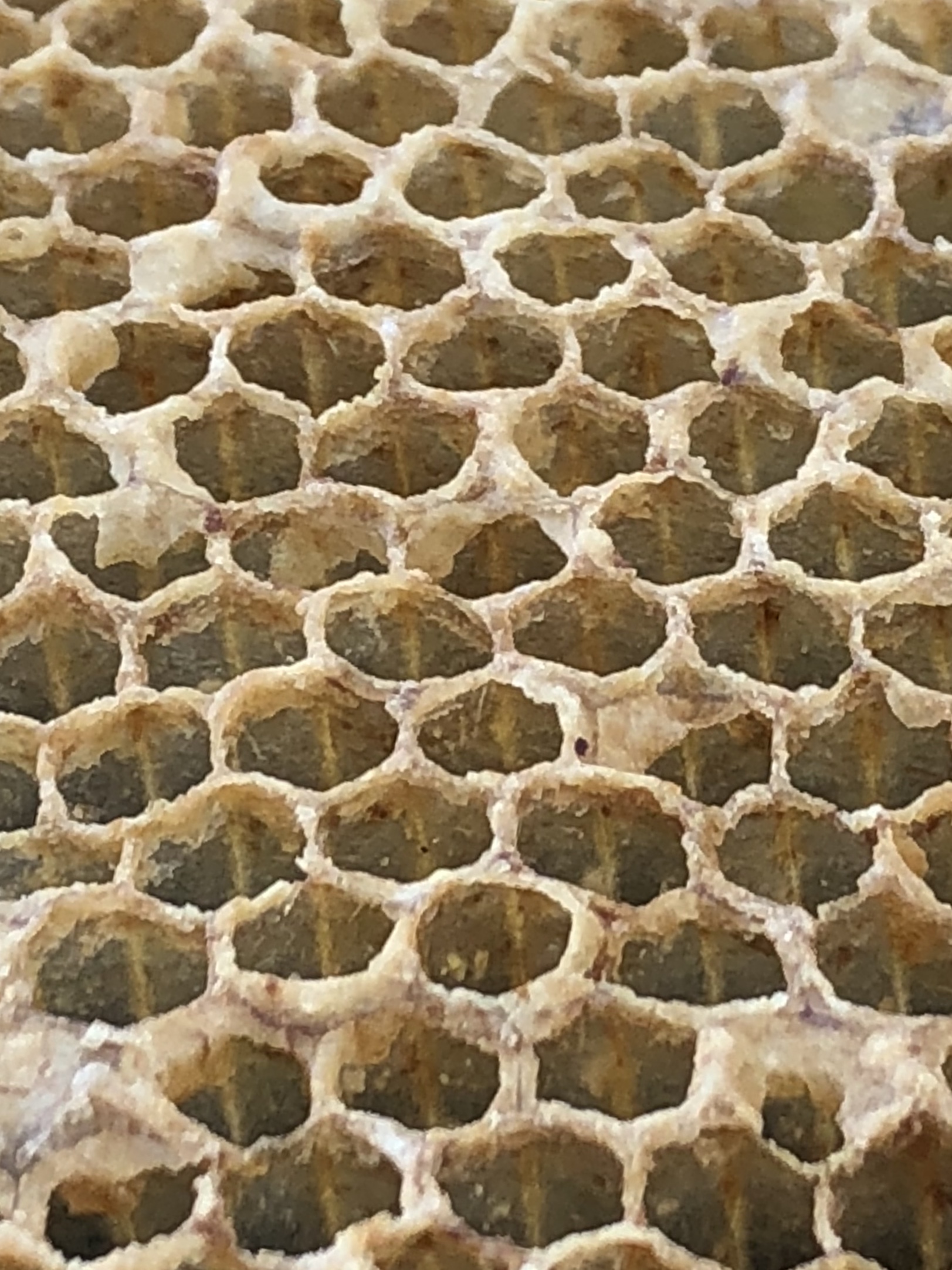
Feeding Tips Often our post-summer harvest hives will need additional resources such as carbohydrates and water. Hot temperature, the lack of natural forage, and large populations can dwindle down reserves quickly.
Feeding during dearth is challenging since the smallest amount of spilled syrup or the scent of fresh syrup can encourage a change in behavior. Use direct contact feeders such as in-hive frame, hive top, or a top jar/bucket style apparatus.
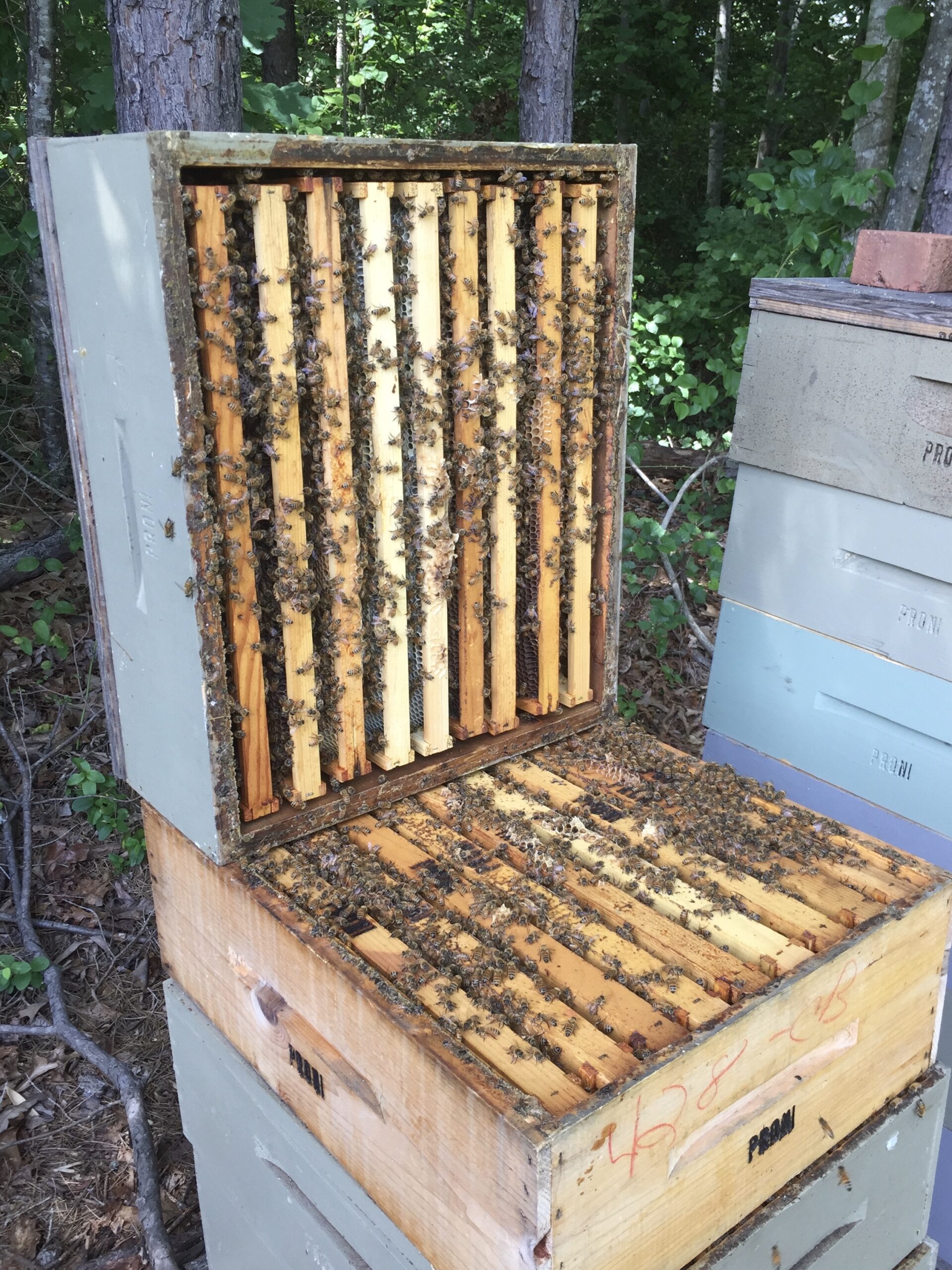
Outside Hive Inspection
Scattered beeswax cappings
Honey bee bodies located in front of the hive
Minimal to no activity of foraging bees at the entrance
Inside the Hive
Large number of pierced and removed wax cappings on the combs
Bottom board covered in beeswax cappings along with dead bees en masse
Little to no nectar/ honey reserves
Extracted Comb Clean-up During extraction we often have the dilemma of freshly extracted combs. There are two trains of thought. The first is to store honey supers wet and the second is to give the “wet” supers back to the bees for clean-up, prior to storage. Many of us prefer the second option as boxes are cleaned up from sticky honey and any residual resources left in the combs may be of benefit to the bees. Allowing bees to remove any resources from wet combs can incite robbing. Different methods are used by beekeepers. The first is placing a honey super back on an active hive and the second is placing wet supers outside, forager bees to clean up.
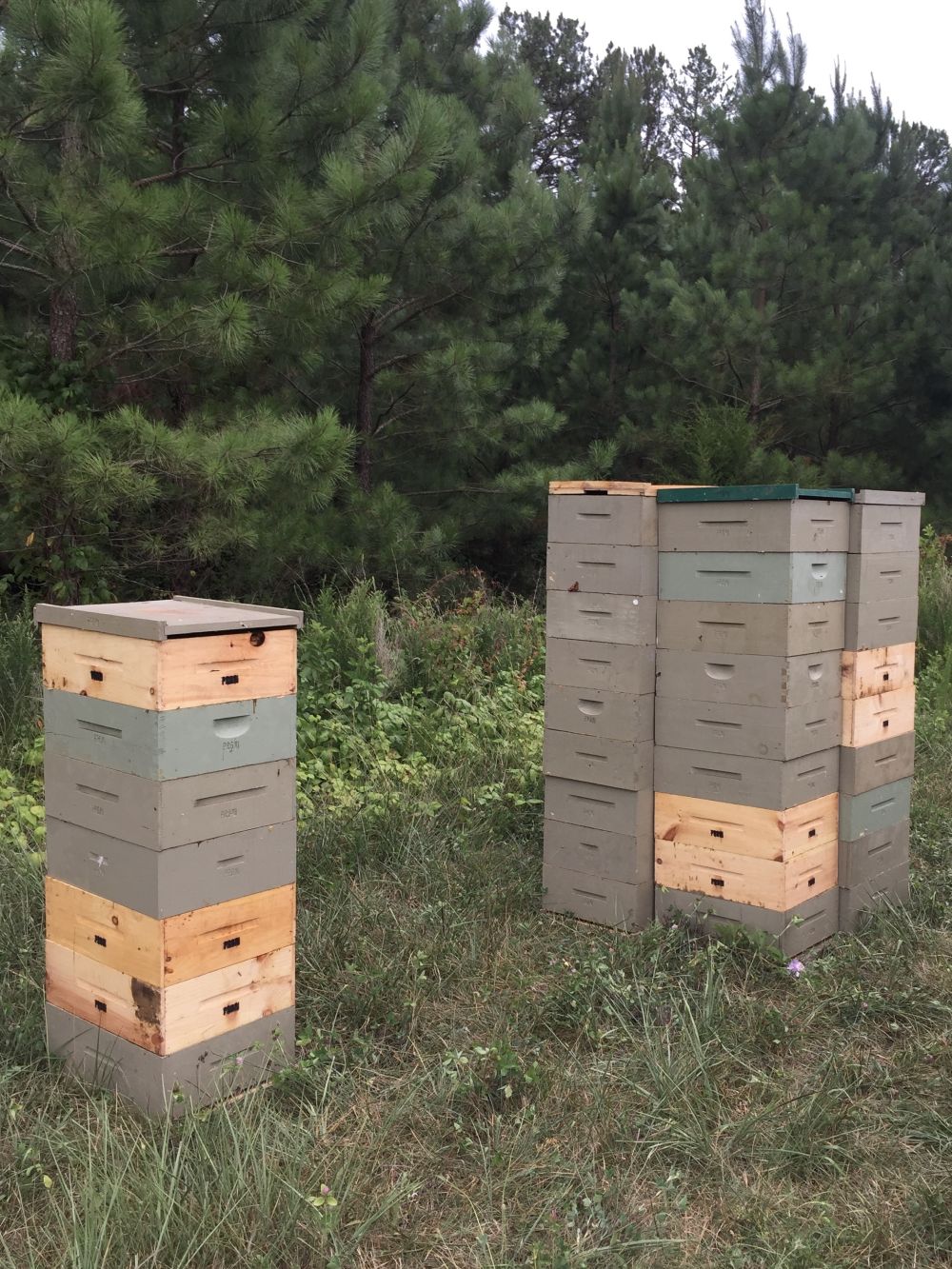
Hive Top Clean-Up offers the advantage of direct comb access for the bees and eliminates the need for bees to travel as they can perform clean up at home. Labor and time are a disadvantage as the colony needs to be opened, the wet super placed on top of the hive, and eventually (quickly) the cleaned-up super must be removed. Upon removal, the beekeeper must also shake the bees from the empty combs prior to storage. As the cliché goes “beekeepers are the movers of boxes.” The advantage of this method is that high hive populations may keep scavengers such as wax moth and small hive beetles from attacking the comb.
Open Field Clean-Up is a simple method where wet honey supers are placed in a field, a long distance away from the apiary, where foraging bees will discover and clean the combs. This process takes a bit longer but once found; supers may be ready for long term storage in a matter of hours to days. There are many advantages since hives do not need to be opened, minimal bees will be present after the process is complete, and all boxes are in one area. This minimizes any robbing potential as these boxes will be placed away from the apiary. Beekeepers must watch as supers placed in this method are prone to small hive beetle and wax month infestations if left out too long.
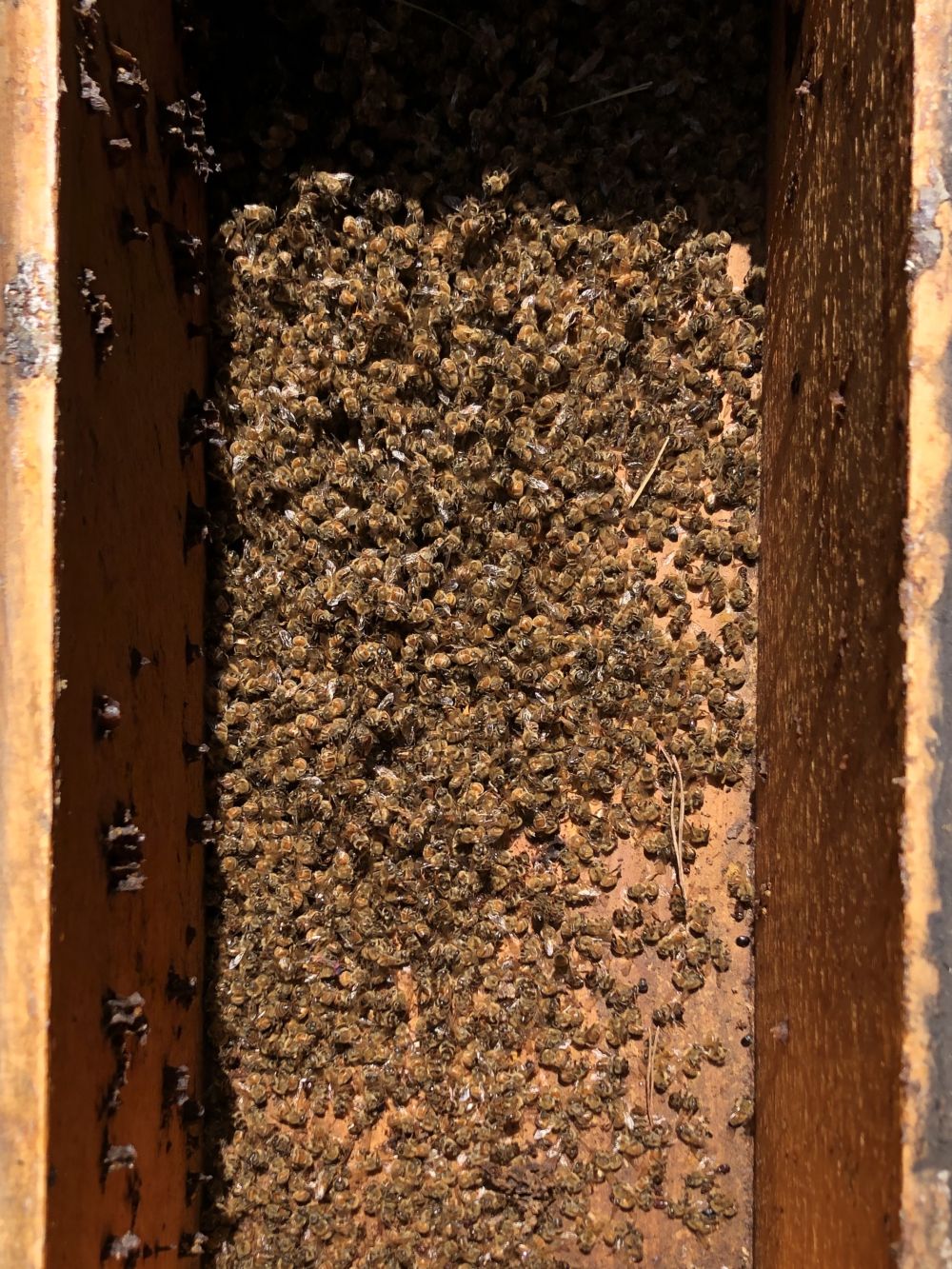
As Summer Fades the preparation of winter readiness begins. A turbulent and challenging summer from heat, robbing events, and an increase in varroa mite populations all takes its toll on colonies. Like us, our bees experience stress and together we must prepare for the winter months ahead. It is paramount to prepare for the next bee season by monitoring mite populations, selecting the best treatment for your region and conditions, and by preparing your bees well ahead of time through feeding. Time usually gets away from us especially after the exhausting but rewarding task of honey extraction. As beekeepers, we are here to assist our bees, and early detection and resource management will pay off with the first flights on next year’s first warm post-winter day.
Join the Véto-pharma community and receive our quarterly newsletter as well as our occasional beekeeping news. You can unsubscribe at any time if our content does not suit you, and your data will never be transferred to a third party!

© 2019-2024, Véto-pharma. All rights reserved